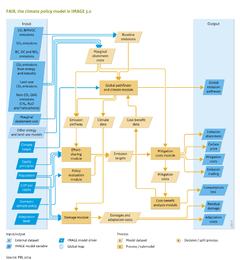Climate policy/Policy issues: Difference between revisions
Jump to navigation
Jump to search
No edit summary |
No edit summary |
||
| Line 1: | Line 1: | ||
{{ComponentPolicyIssueTemplate | {{ComponentPolicyIssueTemplate | ||
|Reference=Den Elzen et al., 2007; Den Elzen and van Vuuren, 2007; Van Vuuren et al., 2011a; Van Vuuren et al., 2012; European Commission, 2010; Den Elzen et al., 2012b; Den Elzen et al., 2011b; UNEP, 2012; Hof et al., 2013; Höhne et al., 2012; Roelfsema et al., 2013; Roelfsema et al., 2014; Den Elzen and Höhne, 2010; Den Elzen et al., 2012a; Hof et al., 2012; Mendoza Beltrán et al., 2011; Hof et al., 2011; Hof et al., 2008; Hof et al., 2010; Den Elzen et al., 2012c; Van Vliet et al., 2012; Admiraal et al., 2015; Van den Berg et al. 2015; Harmsen et al. (2016); | |Reference=Den Elzen et al., 2007; Den Elzen and van Vuuren, 2007; Van Vuuren et al., 2011a; Van Vuuren et al., 2012; European Commission, 2010; Den Elzen et al., 2012b; Den Elzen et al., 2011b; UNEP, 2012; Hof et al., 2013; Höhne et al., 2012; Roelfsema et al., 2013; Roelfsema et al., 2014; Den Elzen and Höhne, 2010; Den Elzen et al., 2012a; Hof et al., 2012; Mendoza Beltrán et al., 2011; Hof et al., 2011; Hof et al., 2008; Hof et al., 2010; Den Elzen et al., 2012c; Van Vliet et al., 2012; Admiraal et al., 2015; Van den Berg et al. 2015; Harmsen et al. (2016); | ||
|Description=[[FAIR model|FAIR]] can be used to analyse baseline developments, such as expected climate change damage. However, more often baseline developments are explored using the larger IMAGE framework, and the FAIR model receives this information as input for policy analysis. | |Description=[[FAIR model|FAIR]] can be used to analyse baseline developments, such as expected climate change damage. However, more often baseline developments are explored using the larger IMAGE framework, and the FAIR model receives this information as input for policy analysis. | ||
| Line 17: | Line 17: | ||
*Evaluation of proposals for financing climate policies ([[Hof et al., 2009]]; [[Hof et al., 2011|2011]]); | *Evaluation of proposals for financing climate policies ([[Hof et al., 2009]]; [[Hof et al., 2011|2011]]); | ||
<div class=“version changev31”> | |||
* Evaluation of trade-offs between mitigation costs, adaptation costs and the benefits of reduced climate damage ([[Hof et al., 2008]]; [[Hof et al., 2009|2009]]; [[Hof et al., 2010|2010]]); [[Admiraal et al., 2015]]); | * Evaluation of trade-offs between mitigation costs, adaptation costs and the benefits of reduced climate damage ([[Hof et al., 2008]]; [[Hof et al., 2009|2009]]; [[Hof et al., 2010|2010]]); [[Admiraal et al., 2015]]); | ||
</div> | |||
<div class=“version newv31”> | |||
* Assessment of the policy costs, emission profiles and climate effects resulting from the use of different climate metrics such as the {{abbrTemplate|GWP}} ([[Van den Berg et al. 2015]]; [[Harmsen et al. (2016)]]); | * Assessment of the policy costs, emission profiles and climate effects resulting from the use of different climate metrics such as the {{abbrTemplate|GWP}} ([[Van den Berg et al. 2015]]; [[Harmsen et al. (2016)]]); | ||
</div> | |||
The FAIR Policy Evaluation module has been used in determining emission reductions resulting from pledges made for 2020 ([[Den Elzen et al., 2012c]]). In 2011, Brazil presented a new, higher estimate for national business-as-usual ({{abbrTemplate|BAU}}) emissions, against which a 36 to 39% reduction pledge was made. The total pledge for all greenhouse gas emissions including emissions from deforestation was a reduction of 20 to 24% compared to the PBL/IIASA BAU emission projections. This reduction is substantially lower than pledged by Brazil from national {{abbrTemplate|BAU}} projections . | The FAIR Policy Evaluation module has been used in determining emission reductions resulting from pledges made for 2020 ([[Den Elzen et al., 2012c]]). In 2011, Brazil presented a new, higher estimate for national business-as-usual ({{abbrTemplate|BAU}}) emissions, against which a 36 to 39% reduction pledge was made. The total pledge for all greenhouse gas emissions including emissions from deforestation was a reduction of 20 to 24% compared to the PBL/IIASA BAU emission projections. This reduction is substantially lower than pledged by Brazil from national {{abbrTemplate|BAU}} projections . | ||
Revision as of 19:45, 6 November 2016
Parts of Climate policy/Policy issues
